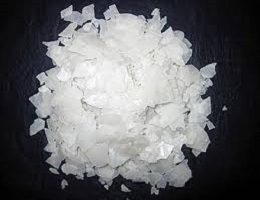Magnesium is the eighth most abundant element in the Earth’s crust, eleventh most abundant element by mass in the human body and third-most-commonly used structural metal (following iron and aluminium). Magnesium only occurs naturally in combination with other elements. It is found in large deposits in minerals such as magnetite and dolomite. The sea contains trillions of tonnes of magnesium and this is the source of most of the magnesium produced each year. It is prepared by reducing magnesium oxide with silicon, or by the electrolysis of molten magnesium chloride.
Function of Magnesium in the Human Body
Magnesium is an important mineral needed for normal, day to day functioning of the human body. It is one of the most common co-factors in the body, helping to promote absorption and function of other minerals such as calcium, phosphorus, sodium and potassium. Magnesiums' role is primarily regulatory - allowing enzymes to function correctly. It supports utilization of B complex, Vitamins C and E in the body. Without it, one would not have a metabolism.
Magnesium ions regulate over 300 biochemical reactions in the body through their role as enzyme co-factors, enabling thousands of bio-chemical processes. It's essential for the breakdown of fats and glucose in the body and regulates cholesterol production. It also aids in the manufacture of DNA and RNA therefore it is involved in the production of proteins, enzymes and antioxidants. In addition, it has a crucial function in the generation and use of ATP. Magnesium and ATP forms a complex MgATP which as a major role in nerve transmission, calcification of tissues, blood vessels, and muscle excitation.
Magnesium Deficiency
A clinical diagnosis of magnesium deficiency can be difficult. Many of the symptoms of low magnesium are not exclusive to magnesium deficiency and the common blood serum test is considered inaccurate since the percentage of magnesium in the blood stream is very low. Most of the magnesium is stored in the cells, so low magnesium levels can effect every tissue in the body. As a result, the first symptoms of deficiency can be insignificant - leg cramps, foot pain, or muscle twitching, loss of appetite, nausea, vomiting, fatigue, and weakness.
| Stage 1 Magnesium insufficiency | Stage 2 Magnesium Deficiency | Stage 3 Severe Magnesium deficiency | |
|---|---|---|---|
| Signs | Involuntary eye movements Muscle spasms |
Muscle spasm Seizures Tantrums Aggressive behaviour |
Vomiting Seizures Tremors Dry skin |
| Symptoms | Minor behavioural disturbances Lethargy Loss of appetite Muscle weakness & cramps Headaches |
Inability to sleep Sensitive to noise Confusion Hormonal imbalances Weakening of the bones Increased intracellular calcium Abnormal heart rhythms |
Impaired memory and cognitive function Blurry vision that changes from day to day Unusual tiredness & drowsiness Un-refreshed sleep Extreme thirst & hunger Itchy skin Tingling or numbness in the hands or feet Coronary spasms |
References
McCarthy J, Kumar R.1999: Divalent Cation Metabolism: Magnesium. In: Schrier R, series editor. Atlas of Diseases of the Kidney. Volume 1. Wiley-Blackwell; 4.1-4.12.
Elin RJ, Rude RK.2000. Oral magnesium and wellness. The Magnesium Report: Clinical, Research and Laboratory News for Cardiologists.
Liebscher DH, Liebscher DE.2003. About the Misdiagnostics of magnesium deficiency. In: Xth International Magnesium Symposium. Cairns (Australia)
Kimura M. 2007 Overview of Magnesium Nutrition. In: International Magnesium Symposium. New Perspectives in Magnesium Research. London: Springer-Verlag;:239-260.
Jacka, F.N. Overland S, et all, 2009, Association between magnesium intake and depression and anxiety in community-dwelling adults: the Hordaland Health Study January vol. 43, 1: pp. 45-52. Australian & New Zealand Journal of Psychiatry

